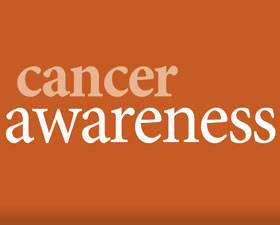What to know about bladder cancer
In a given year, the National Cancer Institute estimates that more than 70,000 Americans will be diagnosed with bladder cancer, while the Canadian Cancer Society estimates than slightly less than 8,000 Canadians will learn they have bladder cancer this year.Despite its prevalence, bladder cancer remains a mystery to many people. But as is true of many cases of cancer, early detection of bladder cancer increases the chances that treatment will prove successful. So while bladder cancer might not be a hot topic, knowing its risk factors and symptoms increases the likelihood of early detection and successful treatment.
Where is the bladder, and what does it do?
The bladder is a hollow, balloon-shaped organ found in the lower abdomen. The bladder collects and stores urine made by the kidneys, which pass urine to the bladder. When the bladder is full, the muscles lining the bladder wall tighten and urine leaves the body.
The bladder wall has three layers. The inner layer of the bladder is also known as the lining. The transitional cells along the lining surface stretch as the bladder fills up with urine, and these cells shrink when the bladder is emptied. Nearly all bladder cancers start in the lining.
The middle layer of the bladder wall is muscle tissue, which will squeeze urine out of the body when the bladder is full. The outer layer covers the bladder, and it is made up of fat, fibrous tissue and blood vessels.
What are the risk factors for bladder cancer?
It's important to note that a risk factor is something that may increase the chance of getting a disease. But the presence of a risk factor does not guarantee a person will get a disease. That said, studies have shown that there are several risk factors for bladder cancer. Those risk factors include the following:
* Smoking: The NCI and the Canadian Cancer Society note that smoking is the most common risk factor for bladder cancer. The tars and chemicals from tobacco smoke pass from the lungs into the bloodstream and then into the urine. That urine collects in the bladder. People who smoke for many years have a higher risk than nonsmokers or those who smoke for a short time.
* Exposure to chemicals: The presence of cancer-causing chemicals in the workplace increases an individual's risk for bladder cancer. Men and women who work in the dye, rubber, chemical, metal, textile, and leather industries may be especially at risk. The NCI notes that hairdressers, printers, machinists, painters, and truck drivers are also at risk.
* Personal history: Men and women who have already had bladder cancer have an increased risk of getting it again.
* Medication and treatment: Men and women with cancer who have been treated with cyclophosphamide, a drug used to treat many different types of cancer, may be at increased risk of developing bladder cancer. In addition, people who have had radiation therapy to the abdomen or pelvis may also be at increased risk.
* Arsenic: A poison that increases the risk of bladder cancer, arsenic can be found in drinking water. Developed countries may have safety measures that limit arsenic levels in drinking water, but those same measures might not be in place overseas, particularly in less developed countries.
Are there symptoms of bladder cancer?
Just like with risk factors, a person may exhibit the symptoms of bladder cancer but not have the disease. In fact, these symptoms might be indicative of another disease or condition entirely. As a result, it's important for men and women to consult their physician should any of the following symptoms appear.
* Blood in the urine that makes urine appear rusty or dark red
* Feeling an urgent need to empty the bladder
* Having to empty your bladder more often than usual
* Feeling the need to empty the bladder without results
* Needing to strain when emptying the bladder
* Painful emptying of the bladder
How is bladder cancer diagnosed?
If your doctor recognizes symptoms of bladder cancer, he or she will try to understand what's causing the problem. That might be as simple as a physical exam, but it may also involve one or more of the following tests.
* Urine test: Patients will supply a urine sample, which will then be checked for blood, cancer cells and other potential indicators of the disease.
* Cystoscopy: The doctor will use a thin, lighted tube known as a cystoscope to look directly into the bladder. The cystoscope will be inserted into the bladder through the urethra, so the procedure can be painful and may require local anesthesia.
* Biopsy: A cystoscope can remove tissue samples, and this procedure is known as a biopsy. Once the tissue samples have successfully been removed, a pathologist will examine them to determine if cancer is present.
The presence of bladder cancer symptoms are not always indicative of bladder cancer. However, the presence of such symptoms is something men and women should immediately discuss with their physicians.




